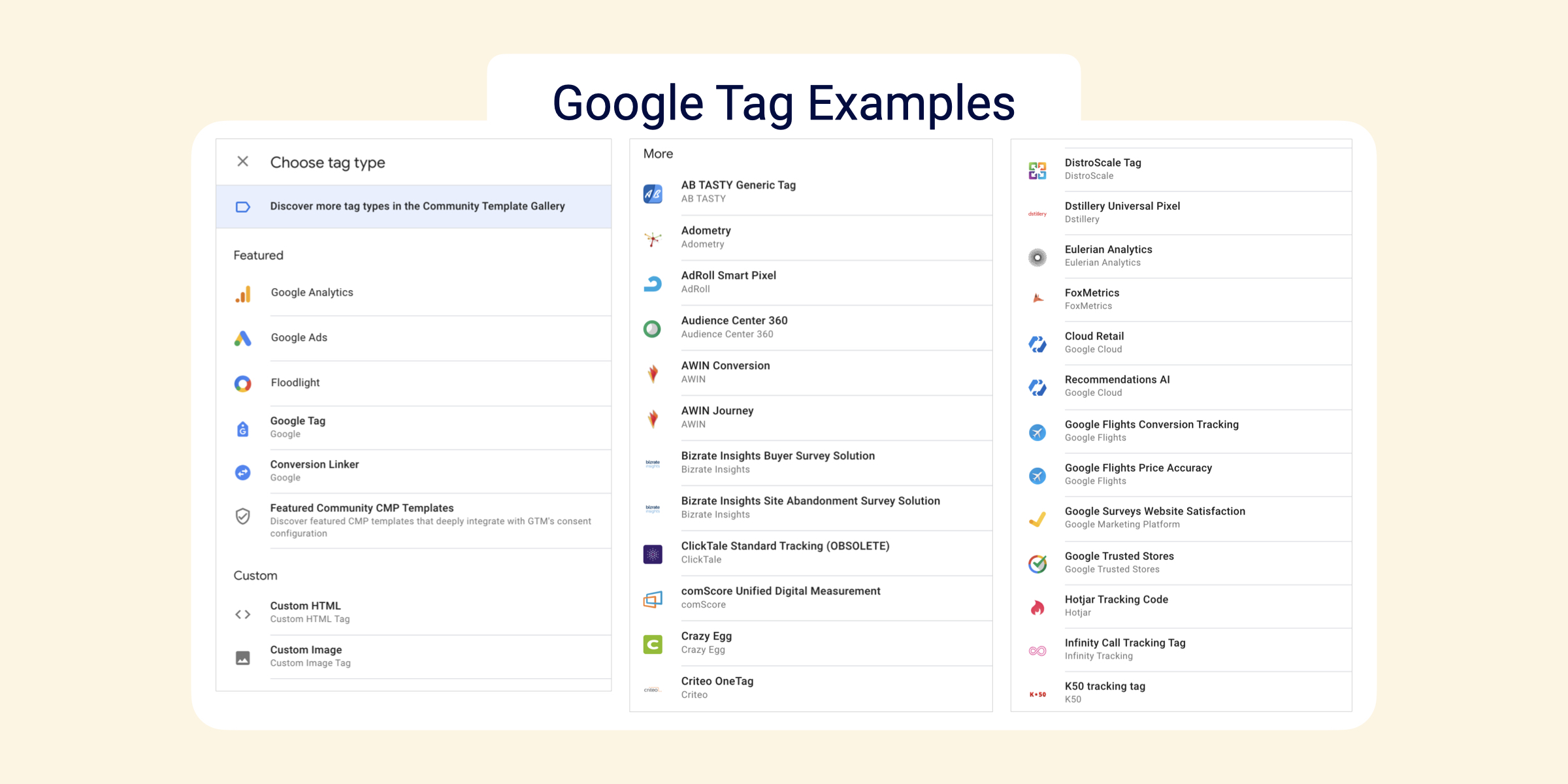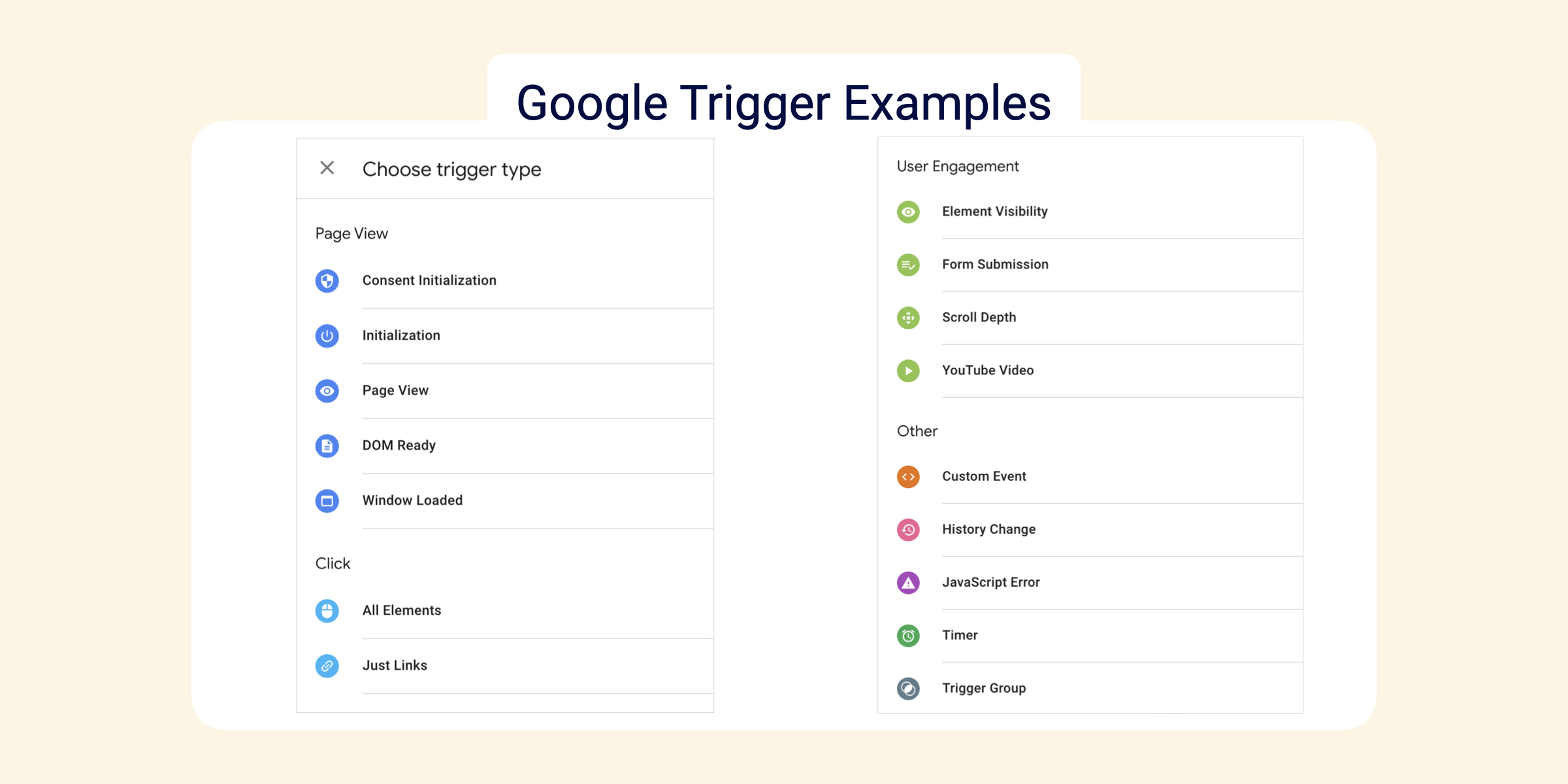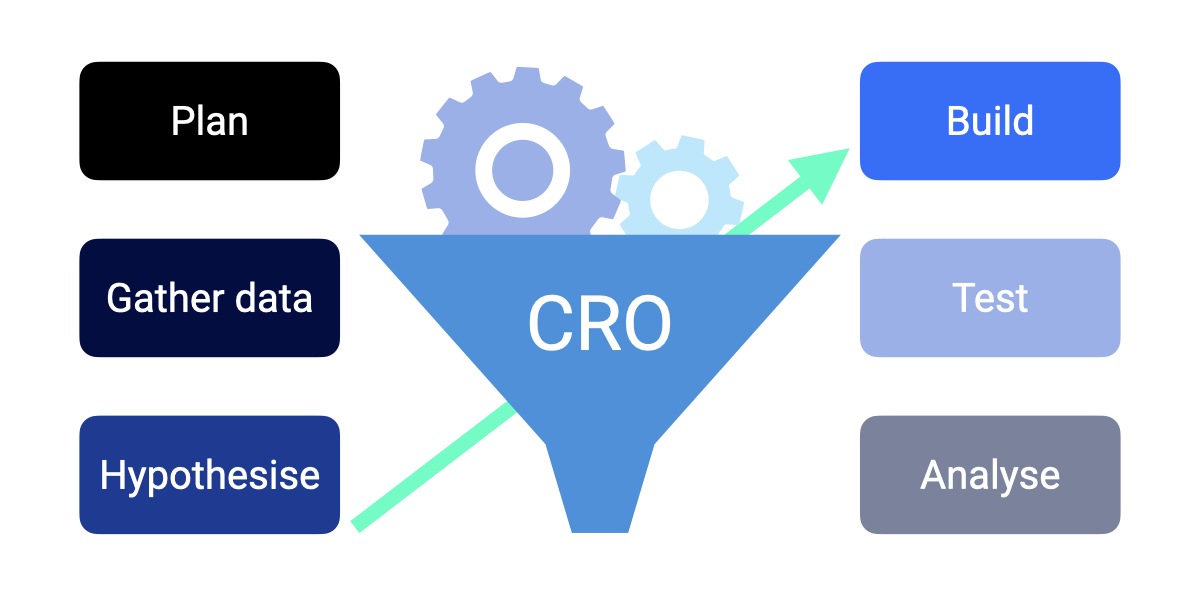Google Tag Manager

Google Tag Manager



What is Google Tag Manager?
Google Tag Manager (GTM) is a free tool that allows you to set up and manage tags or tracking pixels without changing your website’s code. Setting up GTM involves adding code snippets to each page on your site.
GTM shares information between your website and Google Analytics. Google Tags are managed through the Google Tag Manager website, this site allows you to add and update your tags in one place.
What is Google Tag Manager used for?
Google Tag Manager allows you to set up triggers on your site when certain events occur. There are almost endless ways to track activity on your site using Google Tag triggers. You can use GTM to implement marketing and analytics tags, inform your ad spend decisions and identify high-intent users from ad campaigns.
How does Google Tag Manager work?
There are three main parts to Google Tag Manager:
- Tags - Snippets of Javascript or tracking pixels
- Triggers - Rules that tell GTM when to fire a tag
- Variables - Other information needed for the tag to work
What are some examples of Google Tags?
Common tags within Google Tag Manager are:
- GA4 tag
- Google Ads
- Heatmap tracking code
- Facebook pixels
- Custom HTML scripts
- GDPR privacy scripts

What are some examples of Google Tag triggers?
A Google tag trigger is a rule that tells a Google tag when to start collecting data. Common tag triggers within Google Tag Manager include:
- Link clicks
- Page views
- Form submissions
- Add to carts
- Cart abandonment
- PDF downloads
- Custom events

What are some examples of Google Tag variables?
A variable is a value that will change, such as a product name, price or date. Common tag variables within Google Tag Manager include:
- GA Tracking ID
- Page URL
- Page path
- Referrer
- Event

Do I need Google Tag Manager?
Deciding if you need Google Tag Manager depends on your business and your goals. It would be best to discuss your needs with an expert before making a decision. Be aware that GTM can be difficult to set up if you don’t have adequate technical knowledge.
What are the advantages of using Google Tag Manager?
Google Tag Manager allows you to customise the data that is sent to Google Analytics. Multiple users can be given access to the account (with user-specific permissions) allowing you and your team to collaborate easily.
GTM allows you to update your tag across your site quickly and easily. Managing your tags in one place makes it easier to keep track of the code on your site and makes it less likely that you will have old forgotten (possibly broken) code buried in your website.
If GTM is set up correctly it feeds into your Google Analytics account, giving you access to more specific data on your website visitors.
What are the disadvantages of using Google Tag Manager?
Google Tag Manager is not easy to set up or use if you don’t have adequate technical skills. To get the most out of it, it should be set up by someone with developer knowledge. If GTM is set up incorrectly it can affect your website page structure and your page load performance. There are no reports or analysis tools in GTM, it compliments Google Analytics but is not a standalone tool.
If you want to know more about using Google Tag Manager with Google Analytics read this blog.



%2520How%2520to%2520add%2520Google%2520Analytics%2520to%2520Shopify%2520(GA4%2520_%2520Google%2520Analytics%25204).jpeg)

